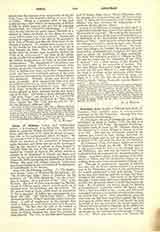

Jonas of Orleans, bishop and ecclesiastical writer, b. in Aquitaine; d. in 843 or 844. From 818, when le succeeded Bishop Theodulf in the See of Orleans, until the time of his death he played an important role in the ecclesiastical affairs of France. He was present in 825 at the so-called Council of Paris, at which the question of the veneration of images was again discussed, and Jonas was one of the messengers sent by the emperor to submit to Pope Eugene II excerpts from the acts of the meeting. He also attended the Council of Paris in 829, which treated of reforms to be introduced in Church and State, and drew up the report of the proceedings of the Synod of Thionville (835) concerning the deposition of Ebbo of Reims. His good will toward monastic institutions was demonstrated by the restoration of the monastery of Saint-Mesmin in his diocese.
Jonas left the following writings: (I) “De Institutione laicali” (rules of Christian life for laymen); (2) “De Institutione regia” (rules of Christian life for princes); (3) “De Cultu imaginum” (on the veneration of images); (4) a recension of the “Vita” of St. Hubert. The first of these was destined for Matfrid, Count of Orleans, and is almost entirely made up of citations from the Scriptures and the Fathers. To the second work of Jonas, which bears no inscription in the manuscript, d’Achery has appropriately prefixed the title “De Institutione regia”. It was destined for Pepin, King of Aquitaine, son of Louis the
Pious. A sort of supplement to the bishop’s first work, it follows the same method and bears the same character. The fact that the acts of the Council of Paris (829) and the contents of these two treatises of Jonas are largely identical has raised the question of their priority. The view, at one time more commonly held (d’Achery, Bahr, Knust, Himly, Dummler), that the synodal acts borrowed from the “De Institutione regia” of Jonas, has been abandoned by several recent scholars who have reversed the relationship of dependence (Waitz, Simson, Ebert).
In spite of the difference of opinion in this regard, it is generally conceded that Jonas is the author of both the acts and the treatises. The work on the veneration of images was written at the request of Louis the Pious in refutation of the Iconoclastic views of Claudius, Bishop of Turin. Jonas wrote it without having read the writings of Claudius, which he knew only through an extract sent to him by Louis the Pious. He maintains that images are justified for purposes of commemoration, instruction, and ornament, but does not seem to admit the lawfulness of their veneration. The work first appeared in print at Cologne in 1554. We owe to Jonas also the recension of the “Vita S. Huberti” and a short history of the transfer of this saint’s relics to the monastery of Andoin. The fact that Bishop Walcaud of Liege besought him to present this life of St. Hubert in a more elegant literary form is evidence of the reputation which Jonas enjoyed as a writer. For the works of Jonas see Migne, P.L., CVI, 121-394; the life of St. Hubert is found in Arndt, “Kleine Denkmaler aus der Merovingerzeit” (Hanover, 1874).
N. A. WEBER

